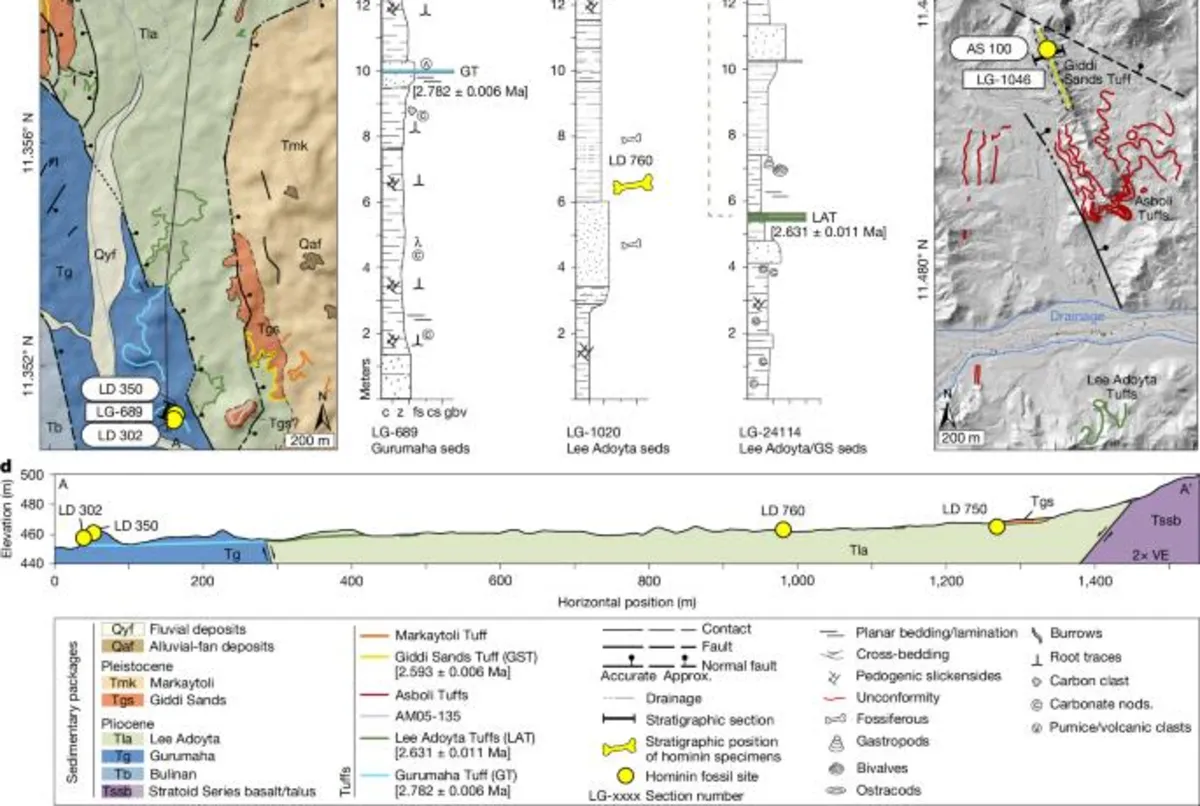
Recent discoveries of hominin dental specimens have brought significant insights into the evolutionary history of early human ancestors. These specimens were unearthed from three distinct sedimentary packages: the Gurumaha, Lee Adoyta, and Giddi Sands. Detailed comparative methods and sampling protocols used in this research are outlined in the Methods section.
The Gurumaha hominin specimen LD 302-23, a mandibular right third premolar, was recovered approximately 22 meters to the southwest and 7 meters stratigraphically below the LD 350 early Homo mandible locality. This specimen was found above the Gurumaha Tuff layer. Although an enamel fragment is missing from the lingual corner, the crown remains remarkably well-preserved. The dimensions of the crown are 11.5 mm buccolingually (BL) and 10.5 mm mesiodistally (MD), indicating a unique shape where the major axis is oriented buccolingually.
Notably, LD 302-23 exhibits a relatively small metaconid positioned mesial to the protoconid, creating a centrally placed anterior fovea bounded by a low, continuous mesial marginal ridge. The occlusal wear present on the specimen complicates the determination of whether the metaconid was entirely distinct from the protoconid at the outer enamel surface. The talonid of this specimen is relatively small, occupying a minor portion of the crown area when viewed occlusally.
In comparison to Australopithecus anamensis and Australopithecus deyiremeda, the shape and occlusal form of LD 302-23 diverge significantly. For instance, the major axis of an asymmetric crown in these Australopithecus species typically runs from mesiobuccal to distolingual, while LD 302-23 has a continuous mesial marginal ridge that forms a ‘closed’ anterior fovea. In terms of dimensions, LD 302-23 aligns with the lower end of the size range for Paranthropus boisei but fits comfortably within the size distribution for Paranthropus robustus.
At locality LD 750, an isolated P4, designated LD 750-115670, was collected from an 8-meter-thick fossiliferous exposure of mudstone and sandstone. This specimen is significant as it lies between the 2.63 Ma LAT and the 2.59 Ma GST. The unworn P4 features salient mesial cusps and broken roots, suggesting it may not have fully erupted, as evidenced by the absence of interproximal contact facets.
The morphological characteristics of LD 750-115670, including a distinct anterior fovea and a relatively large talonid, differentiate it from typical A. afarensis specimens. Its size positions it within the upper range of A. afarensis, while its morphology indicates potential similarities to early Homo, although definitive attribution remains provisional due to the lack of clear synapomorphies.
A collection of five mandibular molars, a maxillary molar fragment, and three maxillary anterior teeth were discovered at locality LD 760. These hominin teeth were found clustered closely together among scattered faunal elements, indicating a distinct fossiliferous unit below the LAT. The mandibular molars exhibit moderate wear, with dentine exposure visible on the M1, and are characterized by a squarish profile, distinctive from early Homo molars.
The morphology of LD 760’s molars reveals a lack of tapering typically observed in A. afarensis, and the absence of derived features associated with Paranthropus. The M1s and M2s are notably broad buccolingually relative to their mesiodistal lengths, contrasting with the rectangular crowns found in early Homo specimens. This unique morphology suggests LD 760 may represent a previously unidentified evolutionary lineage within the Australopithecus genus.
In the Giddi Sands, two significant hominin specimens were identified: AS 100-1a, a partial left M1 crown, and AS 100-1b, which comprised two fragments forming a complete left M2 crown. These specimens exhibit slight wear, with intact crown apices and interproximal contact facets that confirm their identification. The AS 100-1b M2 showcases a rhomboidal occlusal outline, contrasting with the more pronounced lingual occlusocervical sloping seen in A. afarensis.
Given the derived crown outline of AS 100-1b, it is provisionally attributed to Homo sp. indet., highlighting its evolutionary significance. The morphology and dimensions of these specimens align closely with those of other early Homo specimens, providing further evidence of the complex evolutionary history of hominins in this region.
These recent findings from the Ledi-Geraru Research Project significantly enhance our understanding of early hominin evolution. The dental analysis of specimens from the Gurumaha, Lee Adoyta, and Giddi Sands contributes to a more nuanced view of the morphological diversity present in early human ancestors. As research continues, these specimens will undoubtedly provide further insights into the evolutionary pathways that led to the emergence of modern humans.